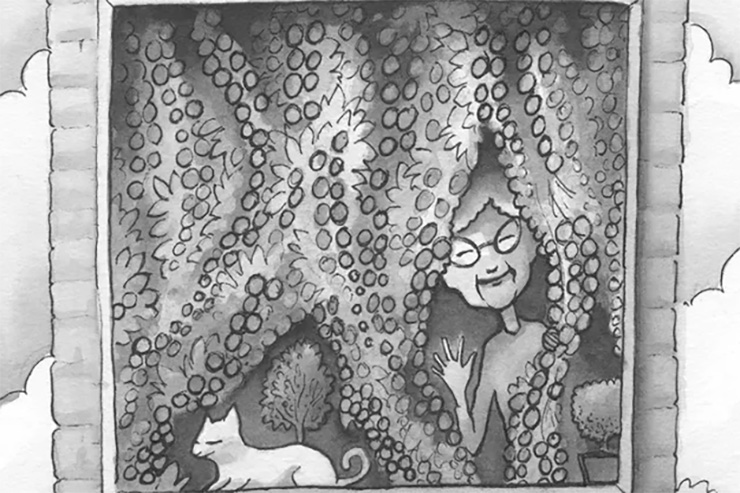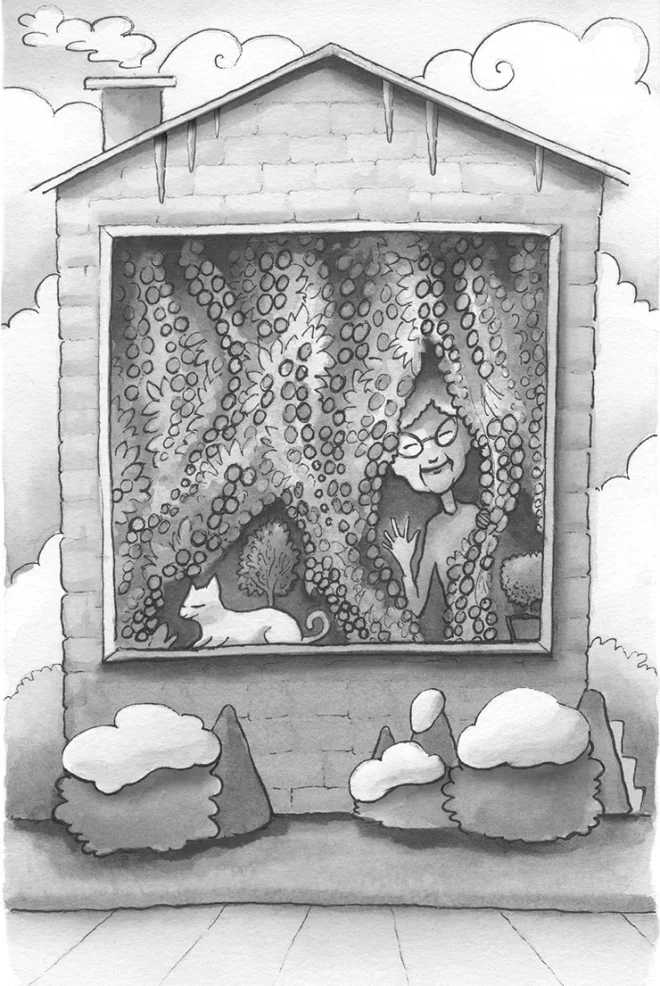
Today’s story reminds me of one cherry-tomato-heavy Summer: the indeterminate cherry tomatoes just wouldn’t die.
I had never seen anything like it. The cherry tomatoes were practically begging to be picked, but no matter how many times I plucked them off the vine, they just kept coming back. And not only did they keep coming back, but they seemed to be getting bigger and juicier by the day.
At first, I thought it was a miracle. But as the days went on and the tomatoes refused to die, I started to think there was something supernatural going on. Maybe the garden was haunted? Or maybe the tomatoes were cursed?
I wasn’t sure what to make of it, but I knew one thing: I had never seen anything like it before. Every sauce and recipe I made that year was made with cherry tomatoes. I was lucky my daughter was still young and happy to pick, because it was her favorite activity all Summer.
And what’s not to love about indeterminate cherry tomatoes? Well, if you love cherry tomatoes, you’ll never go hungry in the Summer, but did you know that tomato tips and suckers can be rooted just by sticking them into the soil, which means they can last the winter too?
That’s the path that led to today’s piece, “My Sprawling Cherry Tomato Plants” by Doris Lange, who had indeterminate cherry tomatoes in every window of her house because her favorite cherry tomato varietal (I wish I knew what it was!) just wouldn’t stop growing! I’d love to know where that plant is now and if it ever died!
More Joy in the Garden
This story comes from our archive that spans over 30 years and includes more than 130 magazine issues of GreenPrints. Pieces like these that turn the joy of gardening into everyday life lessons always brighten up my day, and I hope this story does for you as well. Enjoy!

My Sprawling Cherry Tomato Plants
Take one. Please!
By Doris Lange

It’s winter and there is a sprawling cherry tomato plant in front of my picture window.
There is a history to the sprawling cherry tomato plant in front of my picture window. (There is, of course, a history to everything.)
There are 12 ripe cherry tomatoes on the sprawling cherry tomato plant in front of my picture window. (Gulp—only 11 now!) There are an equal number of little green ones. There are six blossoms and probably an equal number of pre-blossoms. (Is there a word for pre-blossoms? Oh, yes: buds.)
The story began two springs ago when my daughter, Anne, gave me a cherry tomato plant—variety unknown. It turned out to be an ambitious climber. By summer’s end, it had filled its five-foot-high tomato cage and had branches reaching out like an octopus—all the while producing multiple and delicious fruit.
Such a plant deserves to be propagated if possible, so before the end of the season I saved some fruit for seed, not expecting much because hybrid plants often don’t sprout, and I assumed it was a hybrid.
Sometime late the following spring, I rediscovered the seeds (I had forgotten them) and put them in a pot alongside an amaryllis. (I always summer my amaryllis outdoors, don’t you?) Several seeds actually sprouted, so I hunted up a pot and some soil and transplanted the babies. Only one of the seedlings made it through the shock. Summer progressed, and by the end of the season the plant had two big stems and three clusters of green tomatoes. Before frost I moved it and my other vulnerable plants into the garage.
Shortly after that, I moved, also. First (very quickly) to the ground, then to the hospital, and within a week to a rehab facility—with my new hip. While I was convalescing, someone moved all the garage plants indoors and kept them watered. The “someone” could have been one or more of four or five people. Hurray for friends and family! (“Don’t forget to water Doris’s plants. But not too wet! And feed, water, and pet the cat—he really misses Doris.”)
The tomato plant thrived! By the time I got home, it had two stalks that were bending and tangling, so I propped them up on neighboring plants: a coffee tree on the right and a shorter, prettier tree—whose name I do not know—on the left. (I had to bend the longest branch up and over to its support so it wouldn’t block the spot where the cat insists on sitting in the sun.)
I worried about that single blossom—how could it get pollinated with neither another blossom nor an insect pollinator? So right in front of my picture window in November, I nominated my finger to be an insect and, making a gentle buzzing sound, brushed it over that lonely blossom. A few days later, there was a tiny green tomato where the blossom had set. (A few days later, I learned that tomato blossoms can pollinate themselves. So, yes, you can laugh at my tickling a tomato blossom.)
My tomato plant, now named Octopus, continued to thrive. It spread. It blossomed. It fruited, climbed, and produced cherry tomatoes as tasty as its parent’s were.
Karen (she’s one of the “someones”) can’t understand why the tomato thrives in front of my picture window. Neither do I. There’s nothing special about my picture window. Indeed, the big house across the way blocks much of the sunlight all winter.
“If that tomato plant was in my window, it’d never grow!” she complains. Karen has so many plants in her windows that there may not be room for the Child of Octopus I plan to give her (I’m convinced this family of cherry tomatoes would grow anywhere).
Of course, I saved some seeds from the winter’s tomatoes. I also rooted some nipped tips. By planting season, I had lots of new cherry tomato plants to put outside. (I was also beginning to believe my new hip would let me become a real gardener again.)
All the arms of the parent plant had turned and twisted into a complicated wreath. I buried its entire pot in a planter box and strung all its tentacles around a trellis. That done, I let some of the long branches loop down into the earth where they could set root. (Did you know that tomato tips and suckers can be rooted just by sticking them into the soil? That I did know.)
Time flew, or, as they say in movie business, fast forward. It was time to move Octopus back inside. Where did the summer go?
Some of the babies were starting to look like octopi, too. I can no longer remember which babies came from seed and which from cuttings. I don’t know what to do with all the plants I’ve moved into the garage. Mother Octopus will, of course, be returned to her accustomed spot in front of “her” window (as soon as I wash the window).
Karen has accepted a baby to put in her busy window (though she still doubts its ability to thrive). Anne, the daughter who started this epic (aka Grandmother of Octopus), has one seedling—grown two feet tall—and one rooted cutting so she can compare them.
Meanwhile, as winter commences, I find myself greeting every visitor with, “Hi! Wouldn’t you like a cherry tomato plant to put in your window? Look how strong and healthy mine is, and it’s over a year old! It produced tomatoes all winter and all summer, and it produced dozens of new tomato plants, too. Here…”
Not everyone runs away. Some even accept one. But I still have other tomato plants left. They’re on tables. They’re on dressers. My friend Linda, who accepted a plant early last summer, asked if I could babysit hers while she’s gone a few weeks. Where am I going to put it?
And so…
It’s winter and there is a sprawling cherry tomato plant in front of my picture window.
Make that several sprawling cherry tomato plants in front of my picture window! ❖
By Doris Lange, published originally in 2016, in GreenPrints Issue #108. Illustrated by Dena Seiferling

Did this remind you of a similar story about indeterminate cherry tomatoes that you’d like to share? Leave a comment below, I’d love to hear it.




I enjoyed reading this. I just may move the one or two surviving sucker plants that I have moved to the garage to our picture window. This has been a rough fall. I find the decline in available ripe tomatoes nearly depressing. Store-bought, even greenhouse, ‘mators just do not compare to garden-fresh. Real tears of loss have been shed by us and the neighbors that enjoyed our 6 plant crop, Thank you for the story. In Christ, R. Dorien and Cheryl